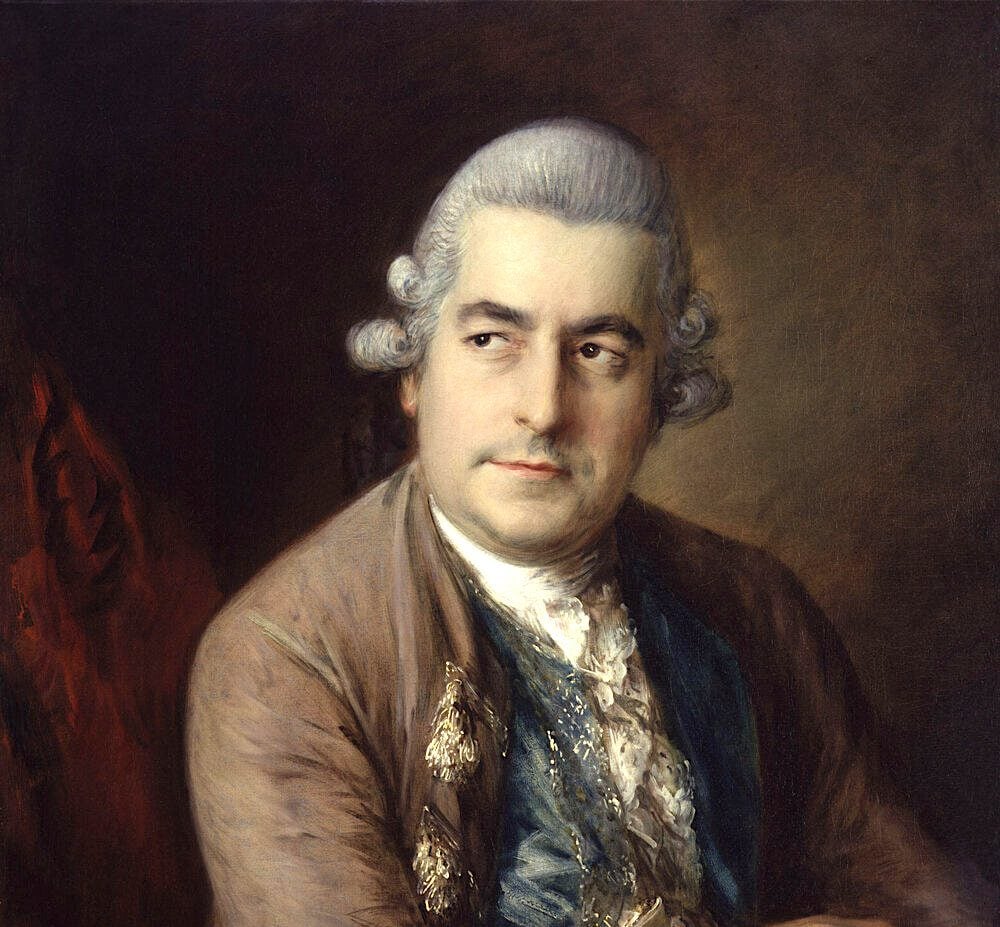In the music of Johann Christian Bach (1735-1782), the uncluttered elegance of the pre-classical style meets with a mind trained in the most elaborate and complex Baroque counterpoint. It’s an extraordinary combination, as can be heard in a number of new recordings.
Just as a shipbuilder or blacksmith in 18th-century Germany would have passed his trade onto his sons, musicians tended to do the same. In the Bach family, the legacy of Johann Sebastian has eclipsed his sons’ careers over time, but in their own day, two of the younger Bachs were revered and influential composers in their own rights. I wrote about some recordings of Carl Philipp Emmanuel Bach previously in Copper and now it’s his younger brother’s turn.
Of course, JC had every opportunity to prepare for his career. As the 18th child (the 13th to survive) in the Bach household, he was surrounded by music constantly, being trained in harmony and counterpoint by his father and his older brother CPE Bach. But CPE was 21 years older than JC, so it’s no surprise that the siblings’ compositional styles are very different.
It’s also significant that JC spent most of his career outside of Germany – first in Italy, where he absorbed the lyrical galant style captivating younger audiences at the time, and then to England, where he became a successful impresario, music master to Queen Charlotte (wife of George III), and a darling of the cultured set.
Although Bach did write in several vocal genres, from sacred choral music to parlor songs to operas, it’s his huge output of instrumental works that’s represented in recent releases. One of those is actually an old recording receiving its first digital transfer: French harpsichordist Brigitte Haudebourg’s classic 1975 LP of the Six Keyboard Sonatas, Op. 17, is finally available for streaming thanks to the efforts of its original label, Arion Music.
In the wistful Andante movement of Sonata No. 2, you can hear the chromatic complexity Bach would have learned at his father’s harpsichord bench. While Haudebourg’s interpretation might not have the sweetness of, say, Judit Peteri’s 2014 recording, Haudebourg has a clear understanding of Bach’s harmonic phrasing.
Haudebourg’s real strength lies in her interpretation of fast movements. Here is the spectacular prestissimo final movement of the Sonata No. 6, with each sentence of rampant triplets clearly delineated and stated with confident motion toward the cadence without ever seeming rushed. If the sophistication of this music appeals to you, you’re in good company: Mozart once declared JC Bach to be his favorite composer, and he loved the keyboard sonatas in particular, even arranging some of them into concertos.
Bach also wrote a great deal of music for instrumental ensembles. The idea of chamber music as contrasted with orchestral music was still in its infancy; some “sinfonias” in the mid-18th century could be played by as few as five musicians, if that’s all that was available. Bach, always at the cutting edge, did designate some works for a specific number of players. Yet a note printed on the original publication of his Two Quintets, Op. 22, gives a sense of how malleable these designations were: “This can be played without instruments” (i.e., as a keyboard solo without additional instruments).
Happily, the new recording by Collegium Musicum Fluminense, released by Nota Bene Records as a 15-minute single, uses the texturally satisfying arrangement for harpsichord, oboe, flute, violin, and cello. The first movement has a jaunty energy as played by this conductor-less group from Croatia. They are not quite in control of their period instruments, which explains the slightly hairy edges of some ensemble passages. Still, there’s a wonderful range of timbres and muted colors that modern instruments can’t provide.
The trendy then-new genre known as the “symphony” seems to have been a bit of an obsession with Bach, who put that label on at least 30 pieces. These pre-classical symphonies commonly had three movements, rather than the four soon to be popularized by Haydn. Usually it’s the minuet that’s missing, but there are exceptions, including Bach’s Symphony in E-flat, Op. 9, No. 2, when ends with a minuet instead of an allegro finale.
Donemus, a Dutch label, recently put out a live recording of that work played by the Chamber Orchestra Perpetuum Mobile under the direction of venerable Russian conductor Igor Blazhkov. The recording is not available on YouTube, but you can stream it on Spotify.
https://open.spotify.com/album/7wbaKKpTpJ3aP9lf3jCdtO
Blazhkov captures the playfulness of Bach’s orchestral writing in the opening Allegro, even if the amount of vibrato in the strings is more prevalent than current ideas on historical performance practice lean toward. The French horn section provides a particularly satisfying inner-voice anchor. One can imagine how this piece inspired Mozart, who wrote magically for horns.
The delicate second movement, marked Andante, seems to float on a cloud sprinkled with snowflake-like pizzicato. Again, the intensity of vibrato in the melody line is distracting, but the legato phrasing has a convincing pathos. The third movement, Tempo di Minuetto, has an appropriately courtly elegance. Unfortunately, a coughing fit from the audience mars the final passages.
Nevertheless, new recordings of this repertoire are rare enough that we should be grateful for every one of them. If you’re looking for a great classic studio recording of some of JC Bach’s skillfully crafted symphonies, I highly recommend the 1991 album by Concerto Armonico Budapest, directed by Péter Szüts on the Hungaroton label.



